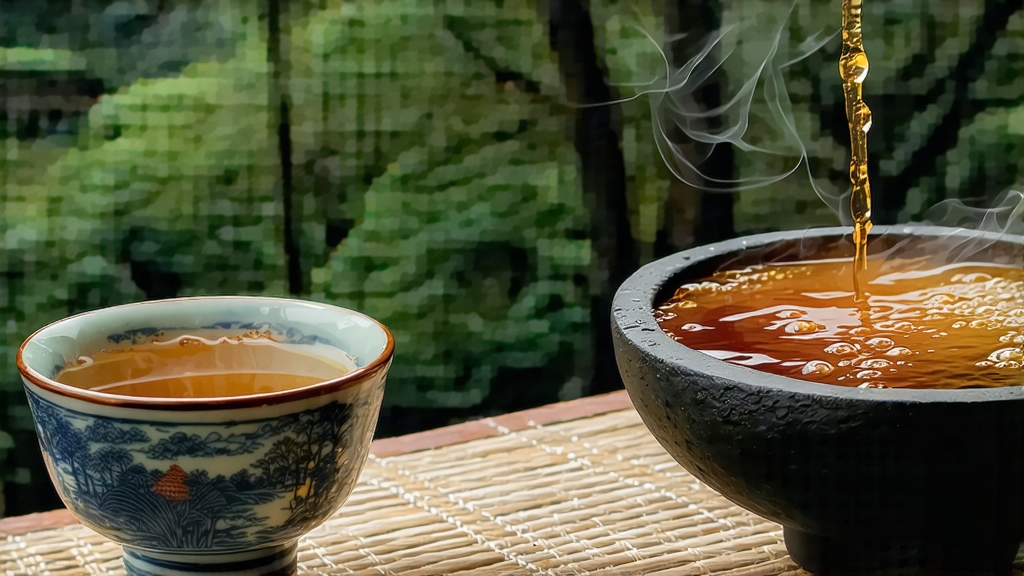
If oolong tea is the most virtuosic family within the vast repertoire of Chinese camellia sinensis, then Phoenix Dancong from Guangdong’s Wudong Mountain is its most flamboyant soloist. Neither a single cultivar nor a generic regional label, Dancong—literally “single grove”—refers to hundreds of aromatic micro-varietals that evolved on fog-laced granite slopes between 350 m and 1,100 m. Each ancient tree, some exceeding 600 years, is allowed to keep its own genetic song; when the leaf is coaxed through a two-day choreography of solar withering, bruising, oxidation and charcoal roasting, it releases fragrances that mimic peach, orchid, almond, ginger flower, even fresh-cut gardenia. International tasters often mistake these notes for added flavouring, yet nothing has touched the leaf except mountain air, smokeless lychee-wood charcoal and the calloused hands of fourth- and fifth-generation tea masters.
The story begins during the Southern Song dynasty, when imperial refugees carried cuttings from the north into Feng Huang (Phoenix) County. Monks planted them on cliffs so steep that cool mist rises every afternoon, acting as a natural air-conditioner that slows photosynthesis and concentrates aromatic volatiles. By the Qing, local gazetteers record “Wu Dong Cha” as tribute tea; the court christened it “Song Zhong” after the original Song-era mother tree still alive today. Republican-era merchants floated the compressed leaf down the Han River to Shantou port, where British and Dutch traders re-named it “Orange Blossom Oolong,” captivated by its citrus-honey finish. Modern clonal science has since mapped over 80 distinct aromatic profiles, yet village councils protect the seed-propagated old-grove stock, insisting that only leaf plicked from individually registered trees may bear the coveted “Feng Huang Dancong” geographical indication.
Plucking takes place only four days each spring, just before Qingming festival, when two-and-a-half leaves and a dormant bud contain the ideal ratio of polyphenols to soluble sugars. Pickers climb bamboo ladders lashed to basalt outcrops, laying the fragile shoots into shallow wicker baskets lined with banana leaf to prevent bruising. By dusk the harvest reaches the village threshold where it is spread, no thicker than two fingers, on woven rattan trays set under a west-facing veranda. The first solar withering lasts 20–30 minutes; the leaf must lose 8 % moisture yet remain cool enough to the touch—an intuition passed from mother to daughter for centuries. Trays are then carried indoors for “cooling green,” a quiet rest that allows internal enzymes to migrate toward the edges.
What follows is yaoqing, the night-time “rocking green,” perhaps the most athletic act in all of tea craft. Ten kilos of leaf are piled into a bamboo drum four feet wide; two men grasp opposite handles and roll the drum in a rhythmic figure-eight, tumbling the leaf against itself for three minutes, then resting one. This bruises the margins without breaking the veins, initiating oxidation that will later manifest as amber liquor. The cycle repeats six times between 9 p.m. and 3 a.m., while the village sleeps under a sky so clear that the Milky Way reflects off the polished drum. Masters judge readiness by the sound: a moist rustle like silk skirts signals 30 % oxidation, the sweet spot for Dancong’s signature balance of floral top notes and mineral depth.
At dawn the leaf is flash-fired in a 200 °C drum for ninety seconds, locking in the bouquet. Hand-rubbing follows: workers press the hot leaf against a hemp cloth, twisting it into tight, dark-green strips that resemble dragon whiskers. The strips are then given a 12-hour “yellowing” rest, allowing residual moisture to migrate outward so the final roast will penetrate evenly. Most oolongs finish here, but Dancong embarks on a second life: charcoal roasting. Using embers of 30-year-old lychee wood, craftsmen bury the leaf in double-walled bamboo baskets for six hours, rest it three days, then repeat—up to three cycles. Each roast drops the moisture by 2 % and adds a whisper of smoked caramel that acts like a time-release capsule, enabling the tea to improve for decades.
To unlock this layered perfume, gongfu brewing is less an option than a necessity. A 120 ml gaiwan, 5 g of leaf, and water just off